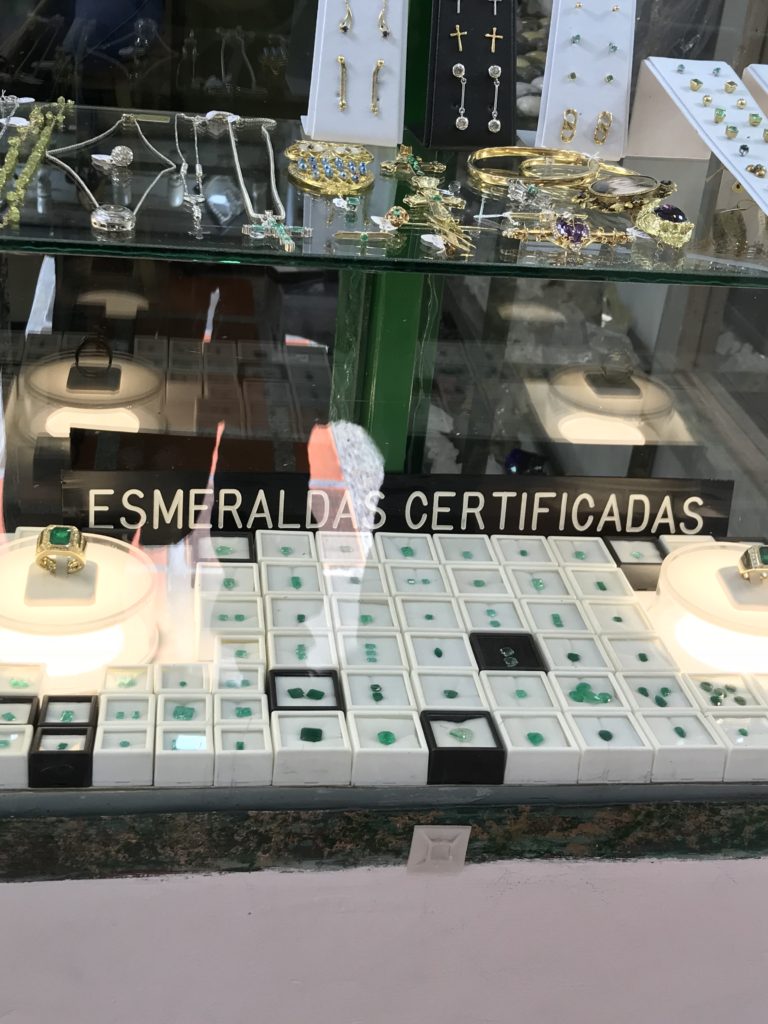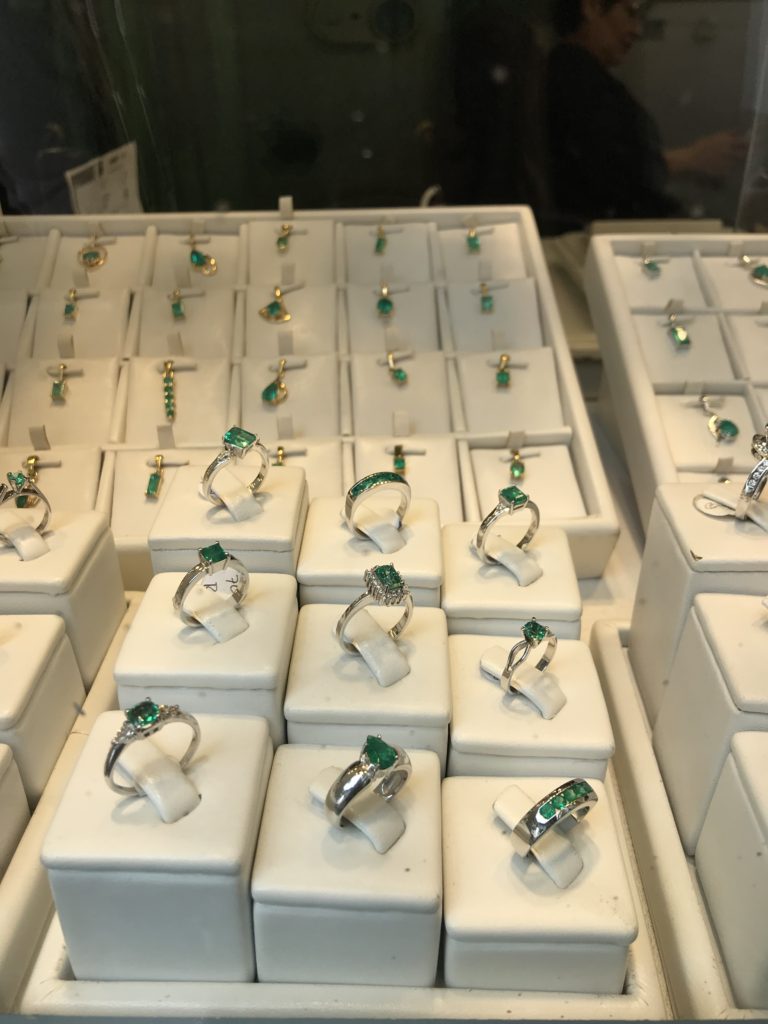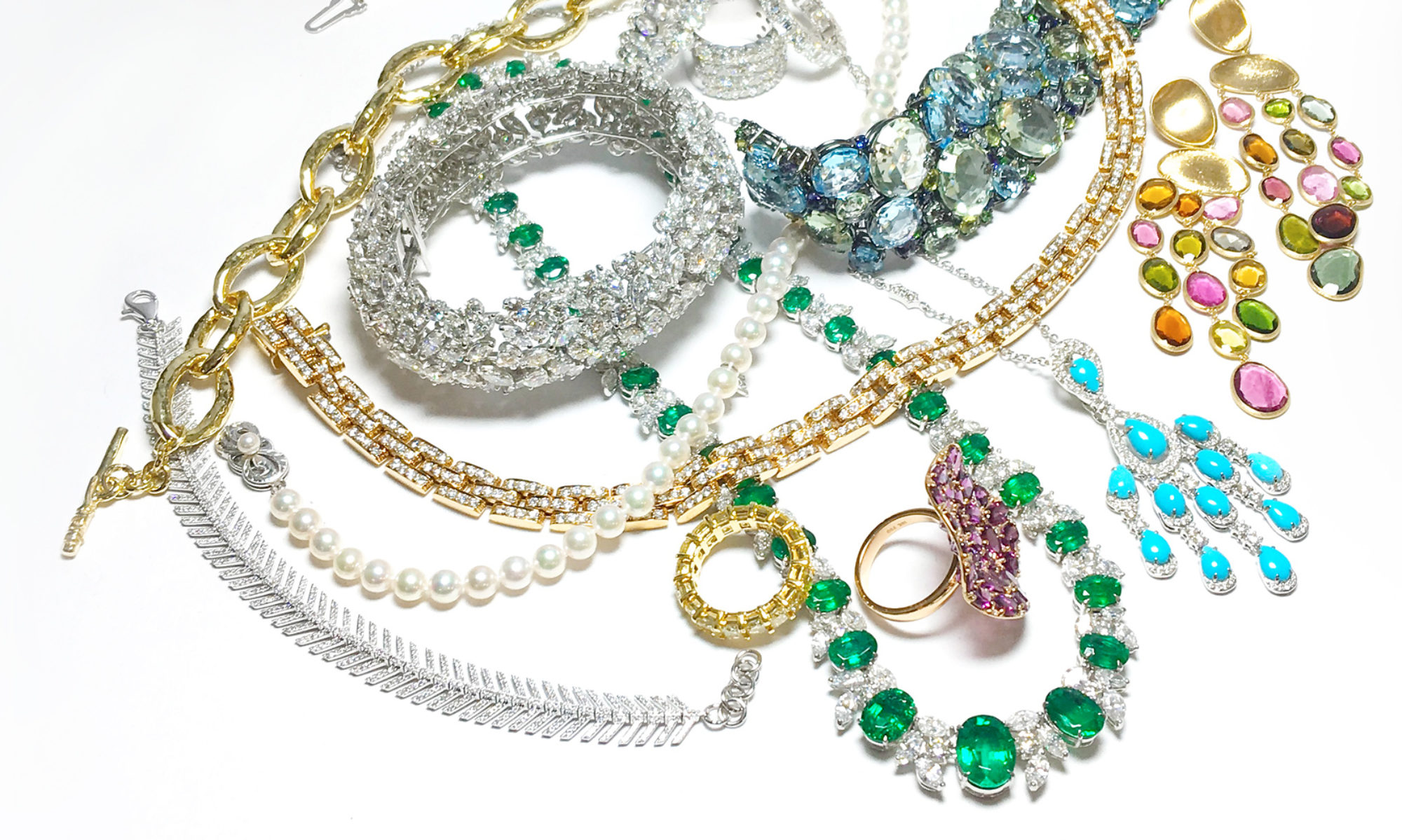My husband and I just got back from a fabulous trip to Colombia. We traveled to Barranquilla, Valledupar, Medellín and Cartagena to visit family and friends. But first, we went to Bogotá, the thriving capital city with a population of more than 10 million. We lived there for almost a year and it’s where we got engaged and legally married. There are a million things to do in Colombia, but I highly recommend spending a day in the Emerald District in Bogotá, which we revisited during this trip.
The Emerald District lies adjacent to Bogotá’s historic center, better known as La Candelaria. If it’s your first time in Bogotá, La Candelaria is a great place to stay. Beautiful colonial architecture, fabulous food and museums will be around every corner. Plus, every important emerald-related activity is within walking distance.

The first stop on your tour should be the Museo Internacional de la Esmeralda, or Emerald Museum, located at the intersection of calle 17 and carrera 7. (Click here for an explanation of Bogotá’s grid system.) The Emerald Museum is on the 23rd floor of the Avianca building, which was once the tallest skyscraper in Latin America. Simply enter on the ground floor and tell the staff at the desk that you are there to go to the museum. They will likely ask for ID and take your photo, so be sure to have your passport on you. Then head to the elevator, and up you go.
The doors will open and you will walk right into the reception area.

After paying the COP$5000 per person entry fee (less than US$2.00), a guide will show you to a room to watch a short video about the history of the museum, which was founded in 2008 and displays a private collection. Then, the guide will walk you through a reproduction of three of the most important mines in Colombia: Muzo, Chivor and Coscuez. The tunnel is fake, but the veins in the wall displaying rough emeralds, pyrite and quartz are very real!

Then, you will enter a room filled with towers containing some truly stunning rough emerald specimens. The guide will walk you through them, pointing out different characteristics in the specimens that come from different mines. The Muzo mine generally contains the highest quality emeralds. There are also beautiful panoramic views of the city from this room. Unfortunately, photos are not allowed in most of the museum.
Finally, you will visit the museum’s store. It’s not your average gift shop. This is where my husband and I chose my engagement ring five years ago. My ring has an emerald center stone from the Muzo mine. This time around, however, I wasn’t very impressed with what it had to offer in terms of design or quality compared with previous visits. Or perhaps I’m just spoiled now that I work at Zadok Jewelers, where I see magnificent gems on a daily basis. That’s probably it. Anyway, their inventory is constantly changing, so be sure to check it out.


Right next to the Emerald Museum is the Museo del Oro, the Gold Museum. How convenient! This museum contains multiple floors and exhibition halls displaying gold artifacts and information about gold’s role in the lives of Colombians throughout the country’s history. You could spend hours here. There is an audio guide that you can purchase, and the entry fee alone is just COP $4000 (about USD $1.25). I’ve never felt the need to purchase an audio guide since there is plenty of information on the walls, but many say it’s well worth it.


After all this museum going, you will probably be ready to do some shopping. Lucky for you, there are plenty of treasures to be found. I recommend heading just a few blocks south of the museums to window shop. The sheer quantity of emerald jewelry stores is pretty impressive!


I bought a little something for myself at Joyería y Relojería Angie, a family-owned shop of wholesalers in business for more than 20 years. Lucia, who helped us, was extremely kind and happy to answer all of my questions. She has been working with her family for decades, sourcing emeralds directly from the mines. You can find her shop in La Catedral, a small shopping center on a street lined with emerald jewelry stores. To see what I got, you’ll have to keep an eye on the Jewels Abound Instagram!


Of course, it’s always fun to walk by the Emerald Trade Center to see the traders making deals out in the street. I’ve never taken a picture there because it can be chaotic, but it’s worth walking by.
I hope you’ve enjoyed this e-tour of the Emerald District in Bogotá. Colombia exports more emeralds than any other country, so if you happen to travel to Bogotá, it’s a great opportunity to learn about a huge part of the country’s history and economy. Best of all, it’s accessible to any traveler, from backpacker to trust funder. The museum entry fees are extremely low, and I’ve seen emerald and silver jewelry pieces that start at US$10.00. ¡Buen viaje!
